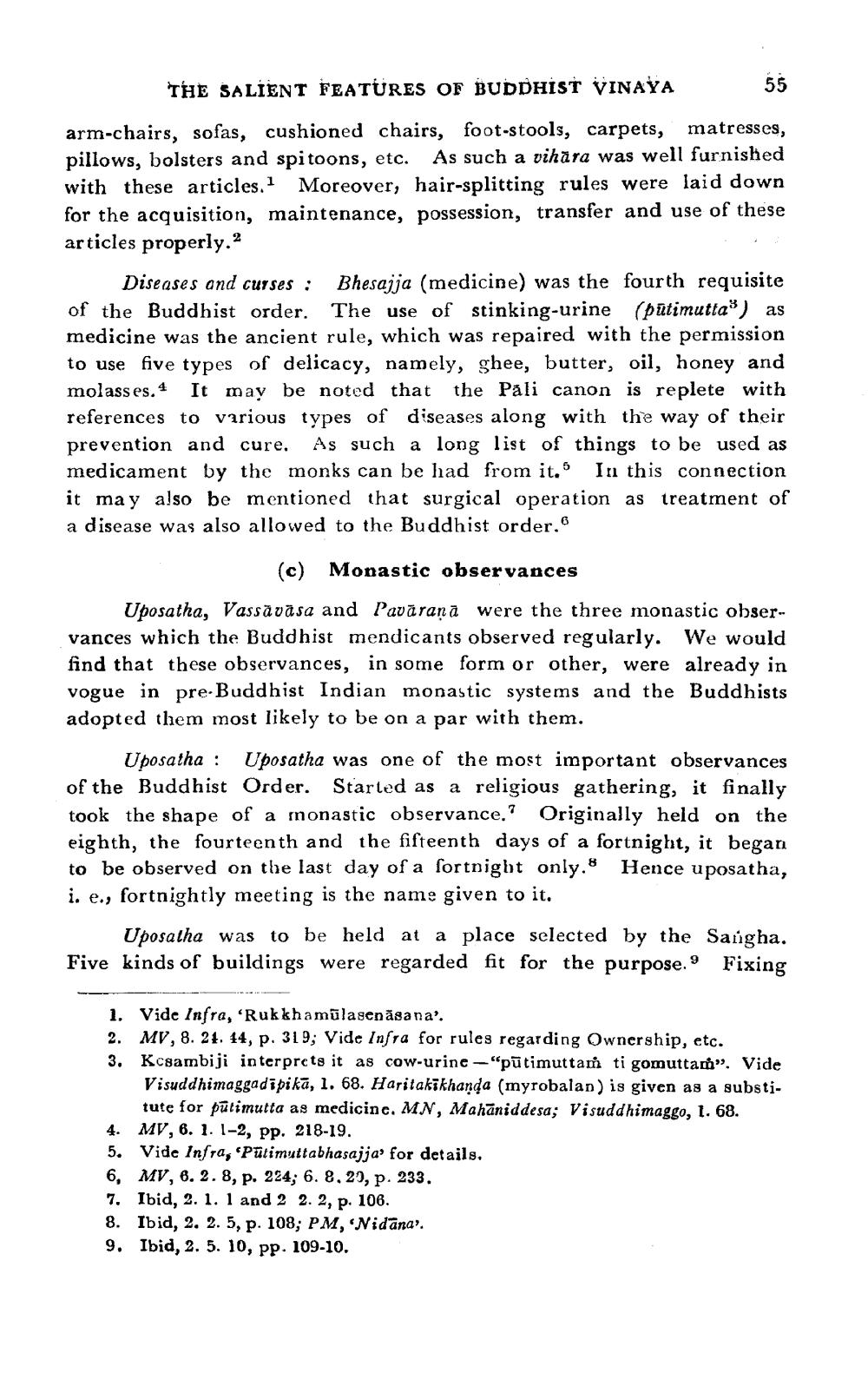________________
THE SALIENT FEATURES OF BUDDHIST VINAYA
arm-chairs, sofas, cushioned chairs, foot-stools, carpets, matresses, pillows, bolsters and spitoons, etc. As such a vihara was well furnished with these articles. Moreover, hair-splitting rules were laid down for the acquisition, maintenance, possession, transfer and use of these articles properly.
Diseases and curses : Bhesajja (medicine) was the fourth requisite of the Buddhist order. The use of stinking-urine (patimutta") as medicine was the ancient rule, which was repaired with the permission to use five types of delicacy, namely, ghee, butter, oil, honey and molasses. It may be noted that the Pali canon is replete with references to various types of diseases along with the way of their prevention and cure. As such a long list of things to be used as medicament by the monks can be had from it. In this connection it may also be mentioned that surgical operation as treatment of a disease was also allowed to the Buddhist order. 6
(c) Monastic observances
Uposatha, Vassavāsa and Pavārana were the three monastic observances which the Buddhist mendicants observed regularly. We would find that these observances, in some form or other, were already in vogue in pre-Buddhist Indian monastic systems and the Buddhists adopted them most likely to be on a par with them.
Uposatha: Uposatha was one of the most important observances of the Buddhist Order. Started as a religious gathering, it finally took the shape of a monastic observance. Originally held on the eighth, the fourteenth and the fifteenth days of a fortnight, it began to be observed on the last day of a fortnight only.8 Hence uposatha, i. e., fortnightly meeting is the name given to it.
Uposalha was to be held at a place selected by the Sangha. Five kinds of buildings were regarded fit for the purpose. 9 Fixing
1. Vide Infra, 'Rukkha mülasenāsana'. 2. MV, 8. 24. 14, p. 319; Vide Infra for rules regarding Ownership, etc. 3. Kcsambiji interprets it as cow-urine -"pūtimuttam ti gomuttam". Vide
Visuddhimaggadi pikā, 1. 68. Haritakikhanda (myrobalan) is given as a substi
tute for pūtimutta as medicine. MN, Mahāniddesa; Visuddhimaggo, 1. 68. 4. MV, 6. 1. 1-2, pp. 218-19. 5. Vide Infra, 'Putimuttabhasajja' for details. 6, MV, 6. 2. 8, p. 224; 6. 8. 20, p. 233. 7. Ibid, 2. 1. 1 and 2 2.2, p. 106. 8. Ibid, 2. 2. 5, p. 108; PM, 'Nidana'. 9. Ibid, 2. 5. 10, pp. 109-10.




